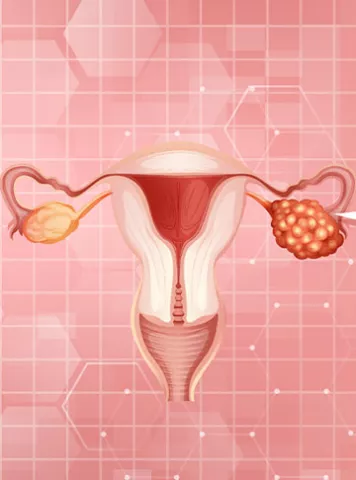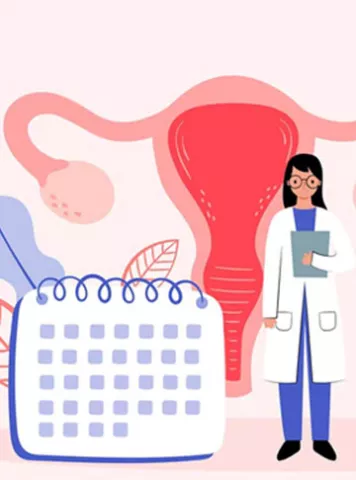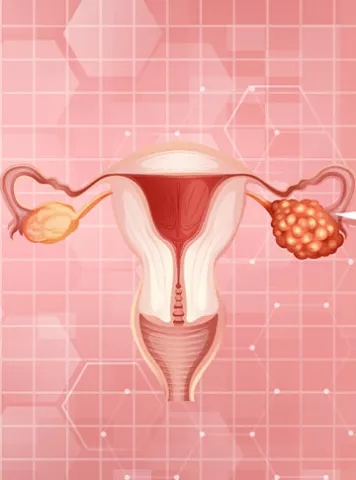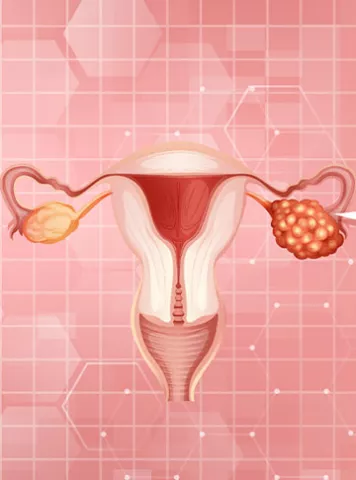on April 07, 2020
OHSS – WORRISOME BUT NOT AT PRESENT TIMES
IN VITRO FERTILIZATION has proved to be a boon for infertile couples. Due to rising trend of infertility caused by change in lifestyle, stress, Hormonal factors IVF has come out to be quick remedy for infertility. But as it is rightly said any technique brings with its own advantages and disadvantages. OHSS is one of the side effect of IVF in some cases. Controlled ovarian stimulation has always been employed during ART in an attempt to retrieve more oocytes. This improves reproductive outcome but there is risk of OHSS.
Ovarian Hyperstimulation Syndrome is an excessive response of ovaries to taking the medicines (especially injectable gonadotropins) used in IVF to make multiple eggs grow. In other words it occurs when the ovaries are hyper stimulated and enlarged due to fertility treatments. Rarely it can occur due to ovulation inducing drugs such as clomifene citrate. Generally the cases are mild but in rare condition it turns to be severe and may lead to serious illness or sometimes death.
The incidence reported of OHSS is around 3-6% for moderate cases and 0.1-2% for severe cases.
WHY DOES IT HAPPENS?
Not fully understood but increased capillary permeability with the resulting loss of fluid into the third space. In the presence of hCG, high estradiol levels may lead to massive shift in body fluids through channels. Also secretion of VEGF and inflammatory mediators leads to its symptoms.
In simplified language women with OHSS have large number of growing follicles along with high estradiol levels. This leads to fluid leaking into the abdomen (belly) which may lead to bloating, nausea and swelling of the abdomen.
Any women undergoing controlled ovarian stimulation using injectable hormones can have OHSS but there are some women who have higher risk. Earlier identification of these women is necessary to lower and possibly eliminate the incidence of this complication.
RISK FACTORS
1.Young age
2.low BMI
3.PCOS
4.allergic history
5.high AFC
6.high dose of gonadotropins
7.high and rapidly rising estradiol level
8.large number of large-medium sized follicles
9.high or repeated doses of hCG
10.pregnancy
11.prior OHSS
SYMPTOMS
Symptoms are categorized in two categories
Mild to moderate–bloating
Nausea
Swelling of abdomen
Vomiting
Diarrhea
Tenderness in area of ovaries
Severe –rapid weight gain >1kg in 24 hours
Severe abdominal pain
Severe persistent nausea and vomiting
Blood clots
Decreased urination
Shortness of breath
Tight or enlarged abdomen
COMPLICATIONS-
twisting of ovary(ovarian torsion)
Rupture of cyst in an ovary which may lead to bleeding
Blood clots in large vessels usually legs
Breathing problems
Electrolyte imbalance (sodium, potassium, others)
Kidney failure
Fluid collection in abdomen and chest
Pregnancy loss
Rarely death
PREVENTION –
Strategies to help prevent OHSS include that your doctor carefully monitor each cycle which include frequent ultrasound to check the growth of follicles and blood test to check your hormone levels.
1.Adjusting medications- Using lowest possible dose of hormones to stimulate ovaries and trigger ovulation.
2.Adding medicine- Some medicine which seem to reduce risk include low dose aspirin, cabergoline and calcium infusion. Women who have PCOS might benefit by giving metformin to prevent hyperstimulation.
3.Coasting – if estradiol level is high or there are very large number of mature follicles doctor might stop injection and wait before administering hCG trigger.
4.Avoiding hCG as a tigger shot-instead of hCG other gonadotropin releasing hormone agonists like leuprolide can be administered for trigger.
5.Freezing of embryos-after ovum pick up the retrieved mature follicles are fertilized with sperms and embryos D5 blastocysts are freezed and ovaries are allowed to rest. after one month embryo transfer is done when body is ready.
Most of the symptoms usually resolve in 7-10 days.If IVF is not successful then it usually gets better by the time when next period starts. If pregnancy occurs then it may worsen.
TREATMENT-
In mild cases patient is managed conservatively on OPD basis with close watch on weight, waist size and discomfort.
In modrate cases- asked to avoid vigorous exercise and sexual intercourse.
Fluid intake is asked to increase
Physical and ultrasound examination on frequent visits
Check for drastic change in daily weight and waist measurement
Measurement of how much urine produced each day
For monitoring dehydration, electrolyte imbalance and other problems blood tests to be done.
Excess abdominal fluid is drained using needle inserted in abdominal cavity.
Anticoagulants
Severe cases- patient is hospitalized for monitoring and aggressive treatment including iv fluids.
Medication like cabergoline.
Fertility medicines dose is adjusted Iv fluids
Embryos are freezed and embryo transfer is delayed whenever patient returns to normal condition.
Paracentesis (remove fluid from belly)
Symptomatic treatment.
The concept of IVF has been totally changed to bring OHSS-FREE CLINIC into reality. Segmentation of IVF treatment is done.
-While stimulating the patient instead of long protocol, GnRH antagonist protocol is used.
-At the time of trigger instead of hCG trigger ,GnRH agonist is used
-Freezing of oocytes or embryos
–Embryo transfer to be done in a receptive, non stimulated endometrium either in a natural cycle or with hormone replacement therapy.
OHSS is dangerous iatrogenic complication of IVF but need not to be worried at present times as practicing all preventive measures mentioned above has limited its occurrence rate.
Thus an infertile couple without getting worried for OHSS can fully utilize the benefits of IVF and their dream of having a baby can be safely changed into reality.
Articles
2022


Ovarian Cyst: Causes, Symptoms And Treatment
What is an ovarian cyst? Ovarian cysts are fluid filled sacs in or on the s...


Ovarian Cyst Meaning in Hindi: ओवरी में गांठ कैसे बनती है और सिस्ट होने के कारण, लक्षण
क्या होती है ओवेरियन सिस्ट-जि�...


అండాశయ సిస్ట్ (అండాశయంలో గడ్డ): లక్షణాలు, వ్యాధి నిర్ధారణ మరియు చికిత్సలు
అండాశయ తిత్తి (అండాశయ సిస్ట...


ಅಂಡಾಶಯದ ಸಿಸ್ಟ್ (ಅಂಡಾಶಯದಲ್ಲಿ ಗಡ್ಡೆ): ಲಕ್ಷಣಗಳು, ಕಾರಣಗಳು ಮತ್ತು ಚಿಕಿತ್ಸೆ
ಅಂಡಾಶಯದ ಸಿಸ್ಟ್ (ಅಂಡಾಶಯದ ಸಿಸ್�...
Pregnancy Calculator Tools for Confident and Stress-Free Pregnancy Planning
Get quick understanding of your fertility cycle and accordingly make a schedule to track it














